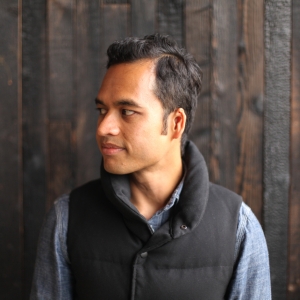- Published on
Q&A with Naz Hamid

I’m Naz Hamid and I’m a digital designer for a living. During the rest of my time, I like to spend it on bicycles, bouldering, hiking and traveling as much as possible.
Tell about your role in the Weightshift. How do you start your typical day at studio?
I’m the founder and principal of the studio. It was always my moniker, back when URLs were the online identities of people, before we had crazy amounts of social networks and our avatars represented the many facets of who we are. It became an full-fledged company about 5 years ago, upon moving to San Francisco.
The alarm clock usually wakes me — right now more so because it’s still dark, but when the mornings get lighter and brighter, I awake as per my natural sleeping pattern, with the sun. But that’s usually 5:30-6am. I’m either on a bike or bouldering during the first two hours or so of the day. It helps me work out any mental pre-occupations, sharpens my physical and mental state, and leaves me feeling refreshed for the day.
Then it’s some combination of a few uninterrupted hours of work onscreen, or meetings at our clients, coffee shops or via Skype/Hangout.
What hardware do you use?
I don’t tend to geek out too much over hardware — just the best value for the buck and what will make work more efficient. Right now it’s an end-of-2011 refurbished 27” iMac with SSD and 12GB RAM and a much more portable and lightweight MacBook Air with SSD and 4GB RAM. Just the right tools for me. I expect 3 years of good work out of them. I never feel much of an impetus to upgrade. For my smart device, it’s an iPhone 5, upgraded on the introductory cycle of a new model.
Tell about your hobby, the Murders & Mysteries project. What software do you use for sound recording?
I’d been in bands since I was 16 all the way through to 29 or so (I’m 35 now). Withe advent of low-cost, low-barrier digital recording, I’ve always been tinkering with making music on my own. I used to dub tapes with recordings and record over them on old double-deck hi-fi systems, which progressed to 4-track machines and then ProTools.
Once I stopped playing in a multi-member live band, I still wanted to scratch the itch of music making. And at the time, GarageBand was still new and its simplicity was alluring. I liked both the challenge and ease-of-use of creating music in a very straightforward manner and I adopted GarageBand as my tool of choice. It was liberating in many ways. I made the first album, “It’s All In Our Histories” from home, on planes, while traveling and whenever I had spare time. It took a few years, working in fits and starts.
I’m currently 80% done with another album and I’ve been working on these tracks for a few years too — about 3 or so. On one hand, I just want to finish them and get them out there, but at the same time, the tinkerer and completist in me wants to do much more to them. I’d like to release them this year, in 2014. Again, it’s GarageBand and working a little more organically.
Where does your work inspiration come from?
Inspiration can come from anywhere, though primarily, I seek it from the offline world. I take my offscreen time seriously, and love spending time in nature, in the outdoors and in quiet places that can be explored and discovered. I’m fortunate that California at times can feel like a big outdoor backyard or playground. It’s good for the sense of play. Playing is something we tend to forget to do as adults. It lets your imagination run free.